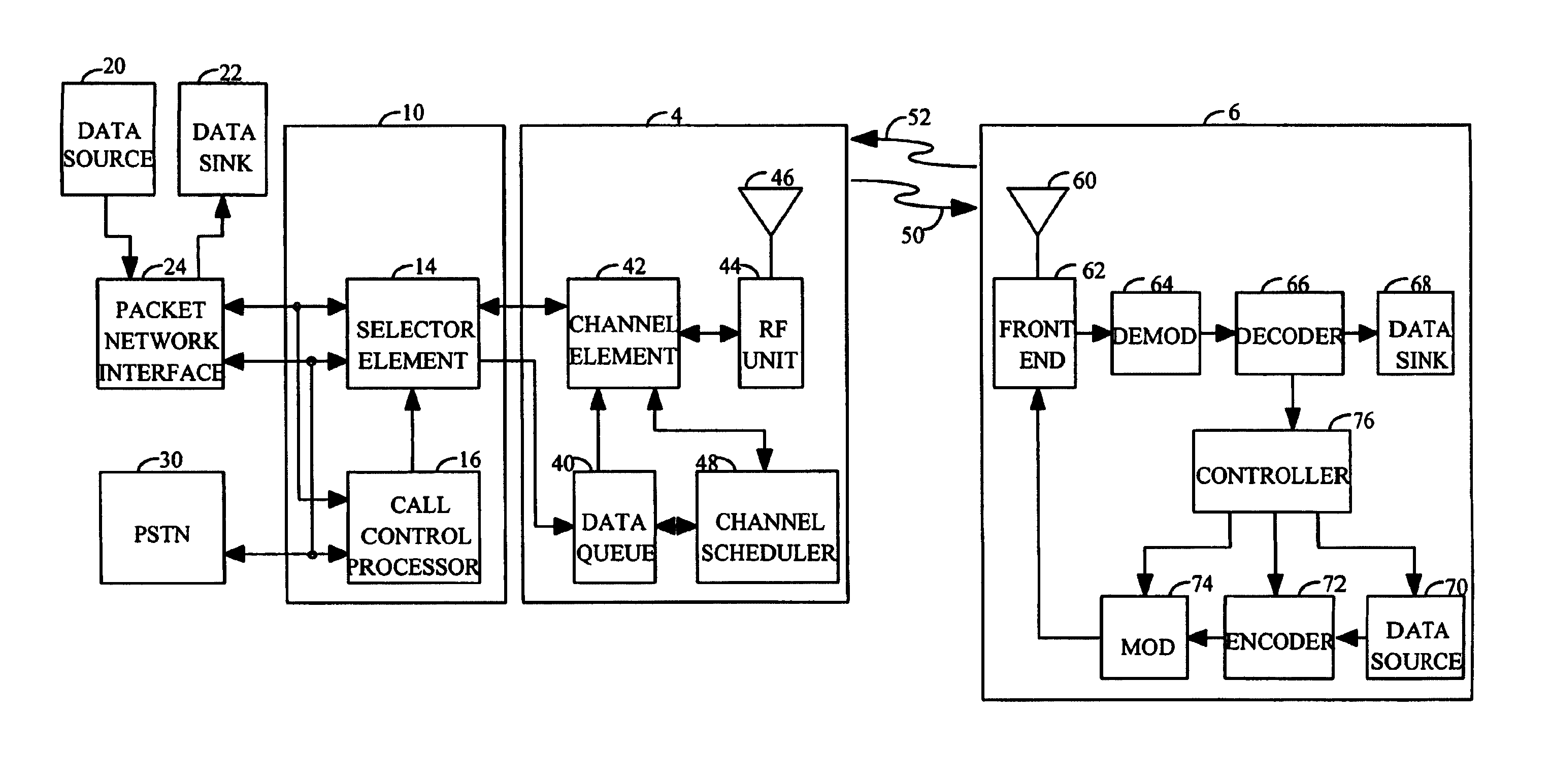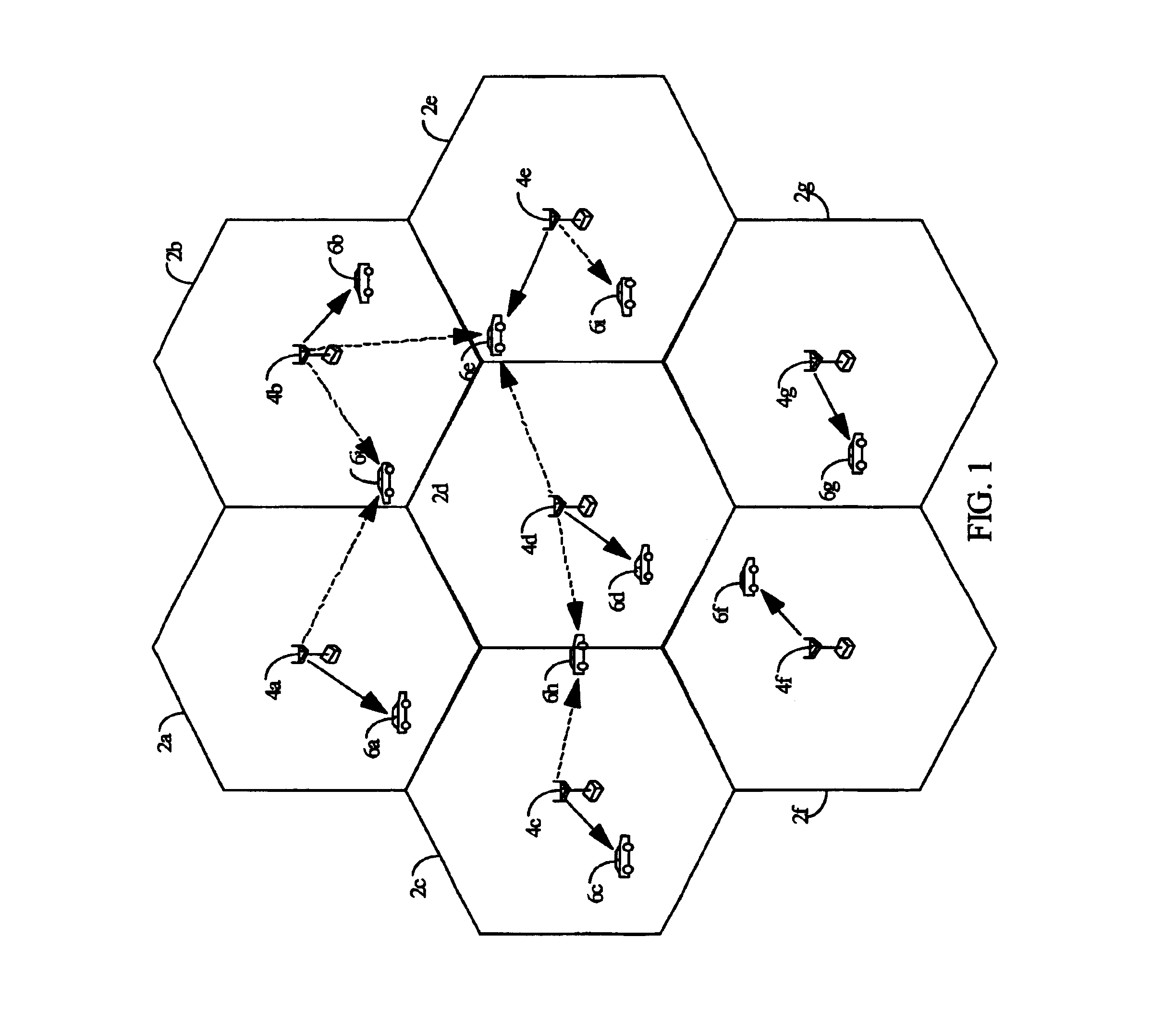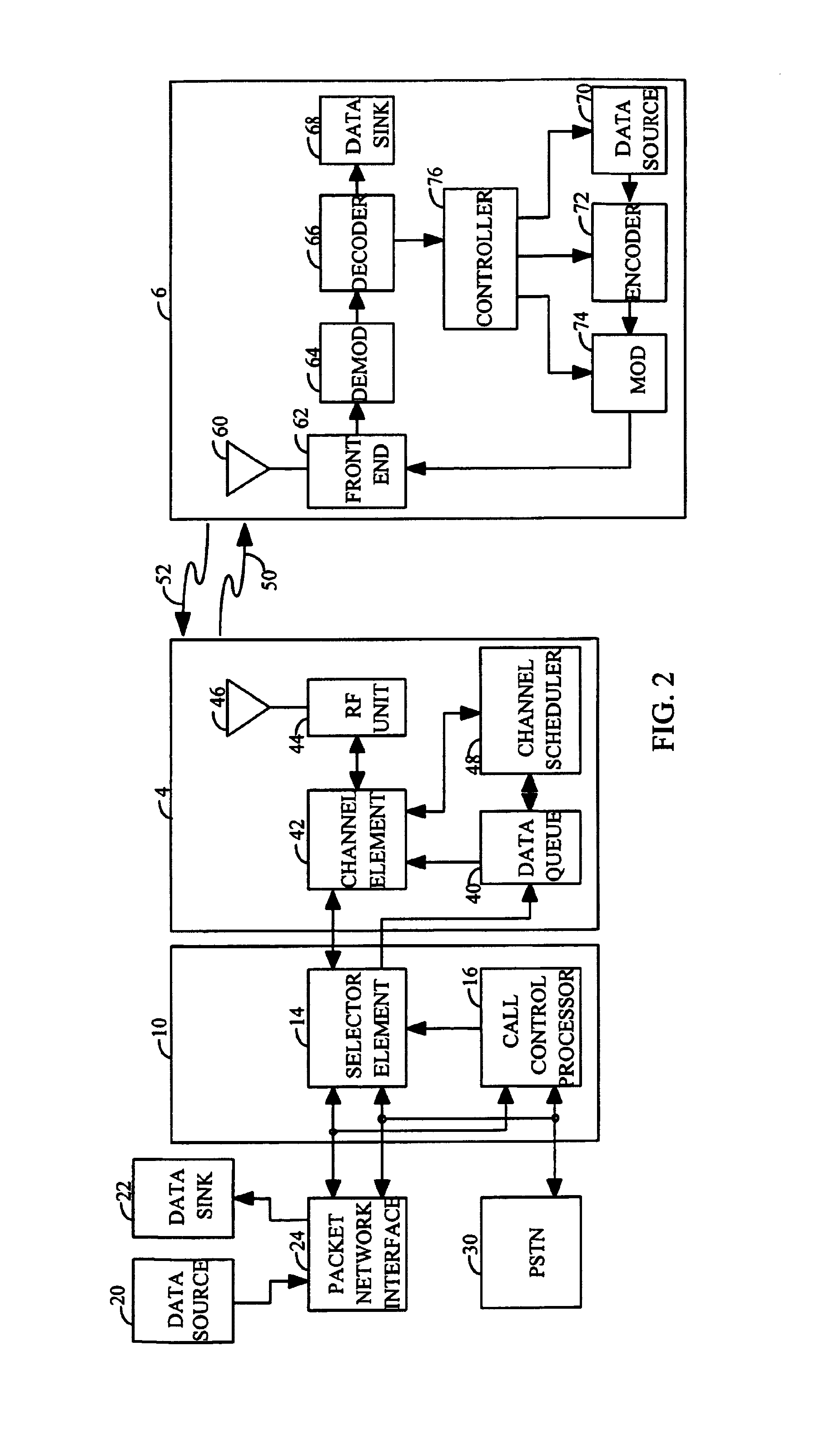Method and apparatus for high rate packet data transmission
a packet data and high-rate technology, applied in data switching networks, data communication services, power management, etc., can solve the problems of imposing stringent and fixed delay requirements, unable to support unable to achieve reliable communication at a rate greater than 122.88 kbps, so as to improve the efficiency of a cdma system and high-rate packets
- Summary
- Abstract
- Description
- Claims
- Application Information
AI Technical Summary
Benefits of technology
Problems solved by technology
Method used
Image
Examples
first embodiment
[0072]In the first embodiment, base station 4 transmits at the requested data rate. This embodiment confers to mobile station 6 the important decision of selecting the data rate. Always transmitting at the requested data rate has the advantage that mobile station 6 knows which data rate to expect. Thus, mobile station 6 only demodulates and decodes the traffic channel in accordance with the requested data rate. Base station 4 does not have to transmit a message to mobile station 6 indicating which data rate is being used by base station 4.
[0073]In the first embodiment, after reception of the paging message, mobile station 6 continuously attempts to demodulate the data at the requested data rate. Mobile station 6 demodulates the forward traffic channel and provides the soft decision symbols to the decoder. The decoder decodes the symbols and performs the frame check on the decoded packet to determine whether the packet was received correctly. If the packet was received in error or if...
second embodiment
[0087]In the second embodiment, each base station 4 transmits a forward activity bit (hereinafter referred to as the FAC bit) which indicates whether a transmission will occur at the next half frame. The use of the FAC bit is described in detail below. Mobile station 6 performs the C / I measurement taking into account the received FAC bit from each base station 4.
third embodiment
[0088]In the third embodiment, which corresponds to the scheme wherein an indication of the link quality is transmitted to base station 4 and which uses a centralized scheduling scheme, the scheduling information indicating which ones of base stations 4 transmitted data at each time slot is made available to channel scheduler 48. Channel scheduler 48 receives the C / I measurements from mobile stations 6 and can adjust the C / I measurements based on its knowledge of the presence or absence of data transmission from each base station 4 in the data communication system. For example, mobile station 6 can measure the C / I at the first time slot when no adjacent base stations 4 are transmitting. The measured C / I is provided to channel scheduler 48. Channel scheduler 48 knows that no adjacent base stations 4 transmitted data in the first time slot since none was scheduled by channel scheduler 48. In scheduling data transmission at the second time slot, channel scheduler 48 knows whether one o...
PUM
 Login to View More
Login to View More Abstract
Description
Claims
Application Information
 Login to View More
Login to View More - R&D
- Intellectual Property
- Life Sciences
- Materials
- Tech Scout
- Unparalleled Data Quality
- Higher Quality Content
- 60% Fewer Hallucinations
Browse by: Latest US Patents, China's latest patents, Technical Efficacy Thesaurus, Application Domain, Technology Topic, Popular Technical Reports.
© 2025 PatSnap. All rights reserved.Legal|Privacy policy|Modern Slavery Act Transparency Statement|Sitemap|About US| Contact US: help@patsnap.com



